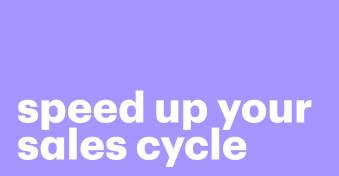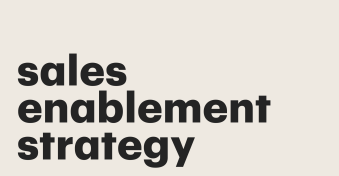Product demos are essential. They allow you to show off your product to a prospective client in real-time. Fortunately, the internet has made it easy to do demos without having to meet with leads in person. Never has this been more useful than in the current era of canceled events and physical distancing.
Since live virtual product demos are one of the best tools for closing deals remotely, you should take the time to get them right. In this article, I’ll teach you how to run a product demo webinar that turns prospects into conversions.
1. Focus on Specific Needs and Features
Your solution might be the most feature-rich, value-for-money product on the market. However, covering every aspect of its features in your webinar will overwhelm your audience. You want them to feel intrigued, not bombarded with facts and figures.
Talking up features they don’t need and won’t use just wastes everyone’s time. Instead, you need to know the client’s requirements and focus on the particular features that address those needs.
Product demo webinars are not a one-size-fits-all solution. While you can use a presentation template, customizing it for each client is vital. What is perfect for one prospect will not necessarily work for another. Therefore, make sure you’ve done your research thoroughly before you start the session, and choose to focus on just a few of the most relevant features.
2. Sell a Solution, Not a Product
Even if your product is the best thing ever invented, your prospective customer is only interested in how it can benefit them. Your prospect has a need or a problem. They have presumably agreed to attend your product webinar because they see your product as a potential solution. Your job is to sell them that solution.
Here’s an example: your prospective client struggles to grow their conversions through their email marketing efforts. Your product demo for your email verification solution would focus on how the product can increase open rate, reduce bounces, and lead to more sales.
Therefore, instead of telling the lead why your product is amazing, tell them what your product can do.
Remember to hit these three critical talking points:
- Identify and empathize with the client’s challenges.
- Paint them a picture of a future where those problems are solved.
- Demonstrate how your product is the answer to those problems.
In other words, sell them a vision. Your product is a means to that end.
3. Highlight your Key Differentiators
There are probably many similar products to yours on the market. Several of them are likely vying for the same client’s business. Therefore, as you plan your product demo webinar, ask yourself what makes your solution stand out. In other words, what is your Unique Selling Proposition (USP)?
Consider the following factors as you define your USP:
- Who is your ideal customer?
- What are their needs?
- How does your solution meet those needs?
- What factors drive their buying habits?
- Why did your current clients choose you over your competitors?
- What positive feedback have you received?
Your USP must be something desirable that none of your direct competitors are offering. As long as it is relevant to client needs, it will set you apart from the competition. If you cannot think of a USP, your product or marketing strategy may need a rethink.
4. Less Talk, More Demo
Whether you’re presenting in front of a live audience or through a webinar, PowerPoint fatigue is real. Workers and decision-makers often have to sit through multiple presentations a week, so it doesn’t take long to get bored and check out. Therefore, creating a slide deck and reading from your slides isn’t enough.
When you promise your audience a product demo, that’s what you must give. Introduce yourself and your company briefly, but keep it short and get to the point as quickly as possible. The product, not you, should be the star of the show.
Remember these top tips to make sure you can deliver what you promised:
- If you’re demonstrating software or other digital product, make sure it is loaded and ready to go before you begin the call. A delay caused by technical issues will interrupt your flow, bore your audience, and make you look unprofessional.
- Don’t use a production version of your product. Instead, show it off with a User Acceptance Testing (UAT) implementation using dummy data. If possible, the dummy data should be relevant to the prospective client.
- Engage your audience. Pause between sections to let them ask follow-up questions, and remember to allow adequate time for a Q&A at the end of the presentation. You can also ask them questions about their needs and how the product might be able to help. The trick is to make it a conversation, not a monologue.
Delivering what you promised, keeping the focus on the product, and engaging directly with your audience will make sure they stay switched on and interested.
It should go without saying, but your product demo webinar is not the time for a hard sell.
5. Practice your Demo
Even though you’re not presenting in person, a webinar demo is still a live event. Therefore, you need to be fully prepared to make sure you are at your best; practice is essential.
Here are three things you should test and rehearse before you start the meeting:
Webinar software
Technical problems can completely ruin an otherwise brilliant presentation. Therefore, make sure you pick the right webinar software and learn how to use it. Check your internet connection, and properly configure your camera and microphone before you begin.
You should also take the opportunity to familiarize yourself with any software features you’re likely to use, such as screen sharing, muting the microphone, or recording the session.
Ideally, check your software by doing a test call with a friend or colleague.
Product demo
Have a rehearsal using the product you’re going to demo to check whether it is working correctly. If you’re using dummy data, set it up correctly and that the results come out as expected. If you look like you don’t know your way around your solution, you will undermine any credibility you had with the client.
If you’re providing your prospect with login credentials, send them ahead of time and test them first. Getting stuck on a login page with incorrect or expired credentials is pretty embarrassing!
Agenda
I always recommend having a script for your product demo webinars. You don’t need to plan what you will say word-for-word, but an outline allows you to take charge of the conversation. It also ensures you hit all your essential talking points without overwhelming your prospect with too much information.
Your prospective customer will be able to tell if you are unprepared, and they will not be impressed. Do them the professional courtesy of doing your research, creating an outline, and practicing your webinar ahead of time.
6. End with a CTA
Your product demo webinar should always end with the sales pitch and a call to action. In other words, what do you want your prospective client to do next? You might schedule a follow-up call, offer them a free trial, or even send them directly to your sales page.
Whatever it is, your CTA must be clear and easily actionable.
Using webinars to showcase your solutions
Product demo webinars are a great way to showcase your solutions to prospective clients. They require a low time investment – typically less than an hour – from the prospect, they are cost-effective, and they work.
A demo webinar allows you to demonstrate your product’s capabilities and show it off in its best light. Learning about your client, their desires, and their problems ahead of time allows you to focus on the features that they will find most beneficial. This personal touch and your unique selling proposition will help you stand out from the competition.
A product demo webinar is not a hard-sell. Your job is to sell a solution, centered on the client’s experience and the projected benefits to them and their business. A smooth, professional product demo inspires customer confidence and builds your credibility.
With practice, professionalism, and a fantastic product to show off, there’s nothing to stop you using demo webinars to nurture those leads into loyal customers.


